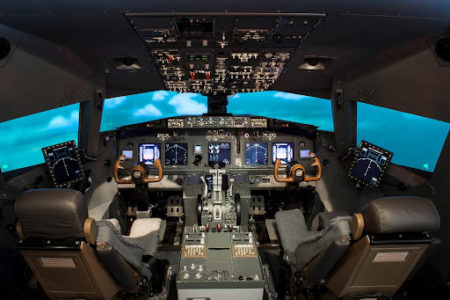Metis Technology Solutions employees on the Simulation and Aircraft Services (SAS) contract at NASA Langley Research Center (LaRC) have supported the successful completion of pilot evaluation data collection for the Human Contributions to Safety simulation project. The objective of the Human Contributions to Safety study is to collect data on behaviors that contribute to routine successful outcomes, safety management, and system design decisions. Analysis of aviation accident data suggests that up to 80% of accidents are caused by human error, justifying future visions for aviation in which the roles of human operators are greatly diminished or eliminated to create a safer aviation system. However, failure to fully consider the human contributions to successful system performance in civil aviation represents a significant and largely unrecognized risk when making policy decisions about human roles. To mitigate risks, the principal focus of the Human Contributions to Safety assessment is to identify current gaps and explore methods for identifying human “success” data generated by the aviation system, from both personnel and the supporting infrastructure.

Research production of the simulation consisted of twelve 737 aircrews flying arrivals and approaches to Charlotte Douglas International Airport (KCLT) in the Integration Flight Deck (IFD) on the NASA LaRC cockpit motion base. Scenarios were developed to provide a common everyday flight experience that is reported by crews flying into KCLT. The simulation was upgraded with a new Rockwell Collins weather radar simulation and an Air Traffic Controller (ATC) display was developed to provide live and realistic air traffic communications.
The Joint Venture Metis Flight Research Associates (MFRA) led the project and provided software engineering, test lead, and hardware engineering to support the pilot evaluation data production runs. The MFRA team developed the project software code and scenarios as well as the weather radar simulation interface. Team MFRA members also led the planning, development, coordination, and integration testing to generate the data in the IFD/CMB facility.
In addition to simulation state data and post run questionnaires, SmartEye eye-tracking data was collected to record where the subjects were looking. Empatica devices were used to collect heart rate, skin resistance, and blood oxygen levels to determine the pilot’s stress level. Automatic Biometric Monitoring was used to collect brain wave information to determine how hard the subject was concentrating or thinking about the situation at hand. All data was combined with video data using the Multi-modal Analysis of Psychophysiological and Performance Signals (MAPPs) software package. Additional video recordings were made to include over the shoulder camera view of the IFD with close ups of primary flight instruments, the ATC display, and audio from the cockpit. Given the success of the study and the value of the data collected, further research under the project is anticipated.
